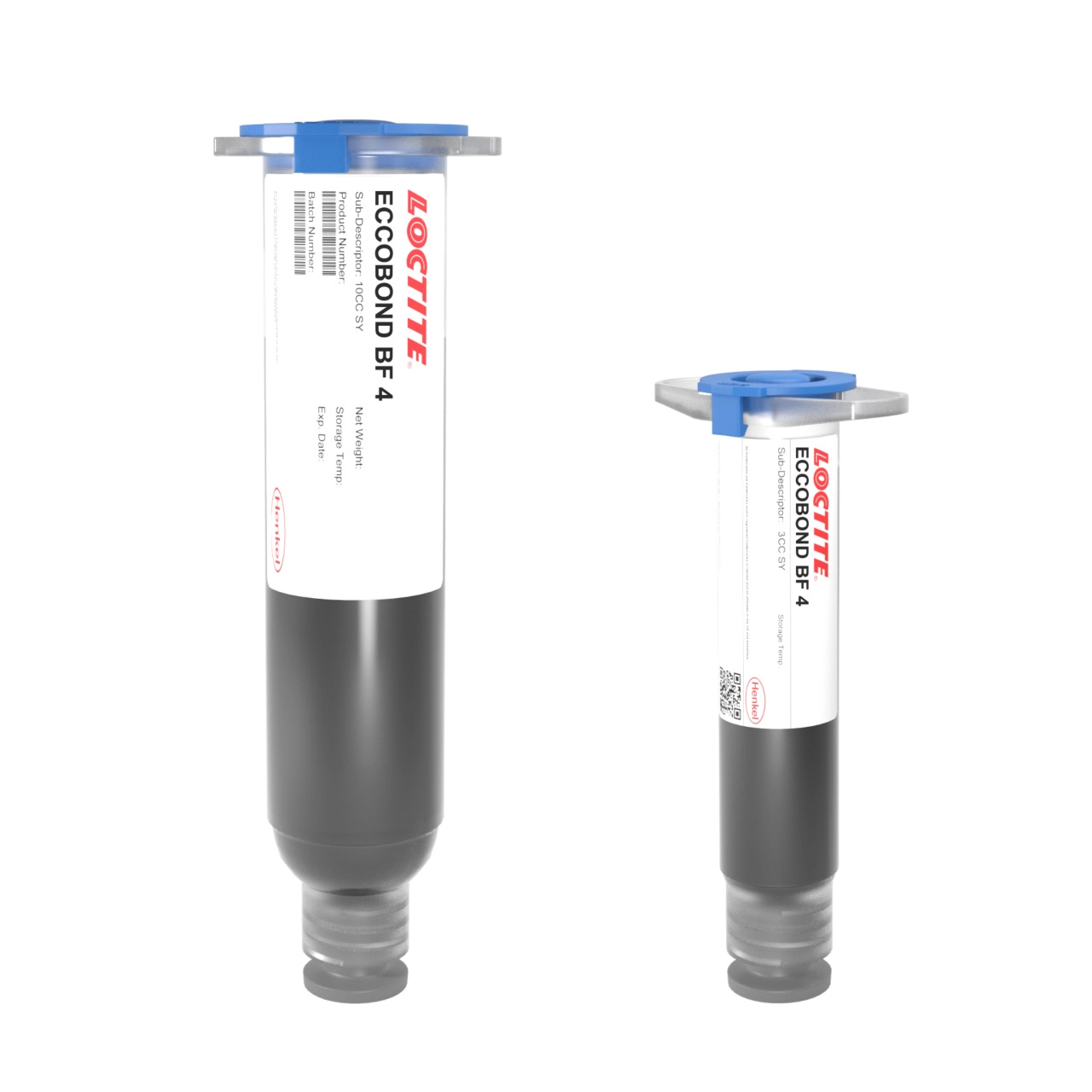LOCTITE ECCOBOND BF4
- Low moisture
- High Tg
- Epoxy backfill material
Product Description
LOCTITE ECCOBOND BF 4 BackFill epoxy adhesive is designed to encapsulate, protect and provide a structural bond for optoelectronic applications. This material compliments the use of AA50 and AA50T adhesives for active alignment of opto components. The combined use of light cure AA50T for active alignment and BF-4 for backfill provides a highly reliable alignment that can withstand changes in temperature and humidity. It is a black, non-conductive, epoxy adhesive designed to protect optoelectronic applications by encapsulating and providing a secure structural bond.
LOCTITE® ECCOBOND BF 4 is a low moisture, die attach adhesive that combines light cure AA50T and BF -4 to provide reliable alignment and raised ability to withstand temperature and humidity changes. The material offers good adhesion to plastic and low outgassing.
Cure Schedule
- 30 minutes @ 100°C
Technical Specifications
| General Properties | |||||||||
| Work life @25°C Work life @25°C Work life is the amount of time we have to work with a material until it is no longer able to be easily worked and applied on a substrate. It is based on the change in viscosity and it can rely on the application requirements. | 24 hours | ||||||||
| Thermal Properties | |||||||||
| Glass Transition Temperature (Tg) Glass Transition Temperature (Tg) The glass transition temperature for organic adhesives is a temperature region where the polymers change from glassy and brittle to soft and rubbery. Increasing the temperature further continues the softening process as the viscosity drops too. Temperatures between the glass transition temperature and below the decomposition point of the adhesive are the best region for bonding. The glass-transition temperature Tg of a material characterizes the range of temperatures over which this glass transition occurs. | 94 °C | ||||||||
| Weight Loss @ 300°C | 0.2 % | ||||||||
| |||||||||
| Chemical Properties | |||||||||
| |||||||||
| Physical Properties | |||||||||
| Viscosity Viscosity Viscosity is a measurement of a fluid’s resistance to flow. Viscosity is commonly measured in centiPoise (cP). One cP is defined as the viscosity of water and all other viscosities are derived from this base. MPa is another common unit with a 1:1 conversion to cP. A product like honey would have a much higher viscosity -around 10,000 cPs- compared to water. As a result, honey would flow much slower out of a tipped glass than water would. The viscosity of a material can be decreased with an increase in temperature in order to better suit an application | 23,500 mPa.s | ||||||||



